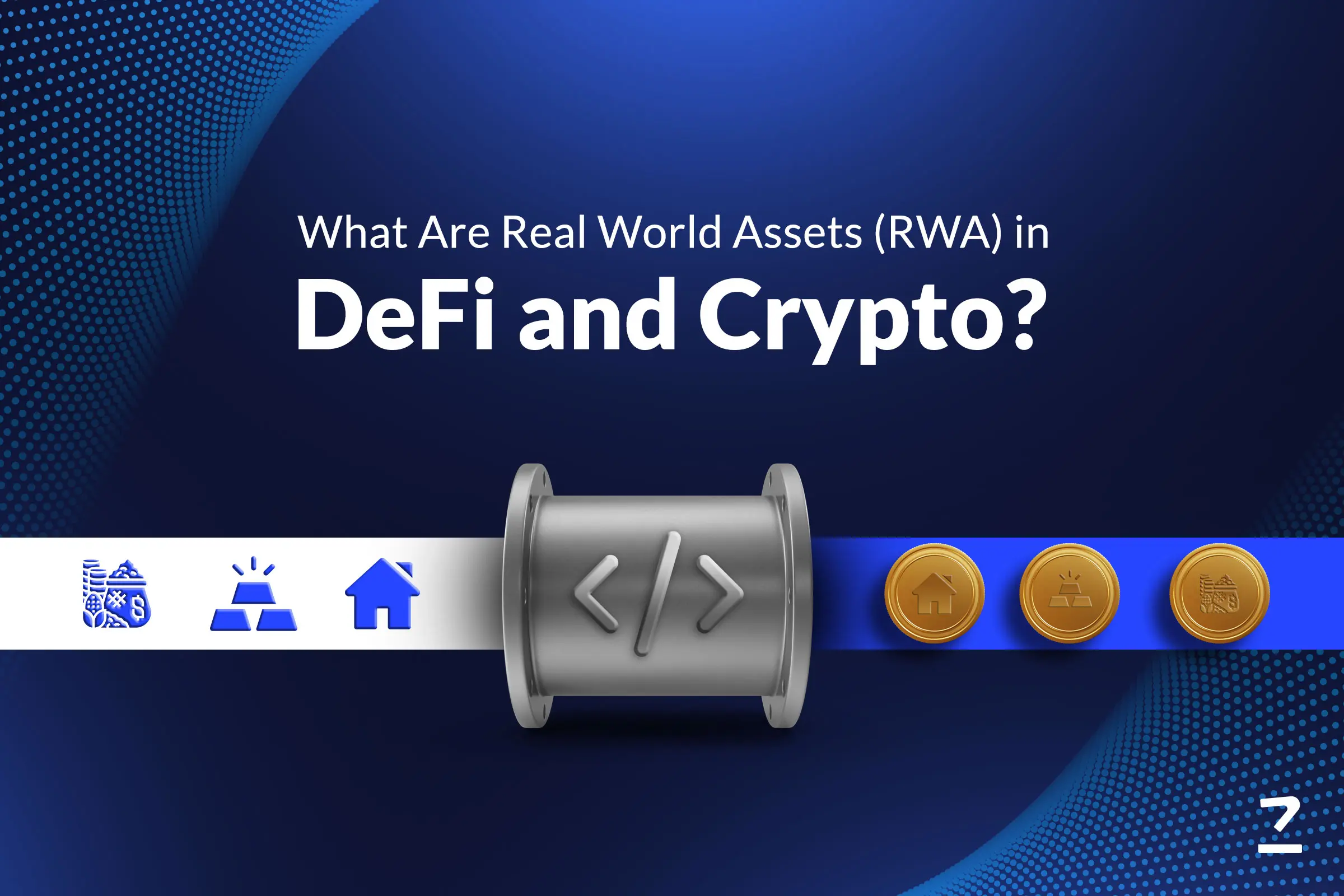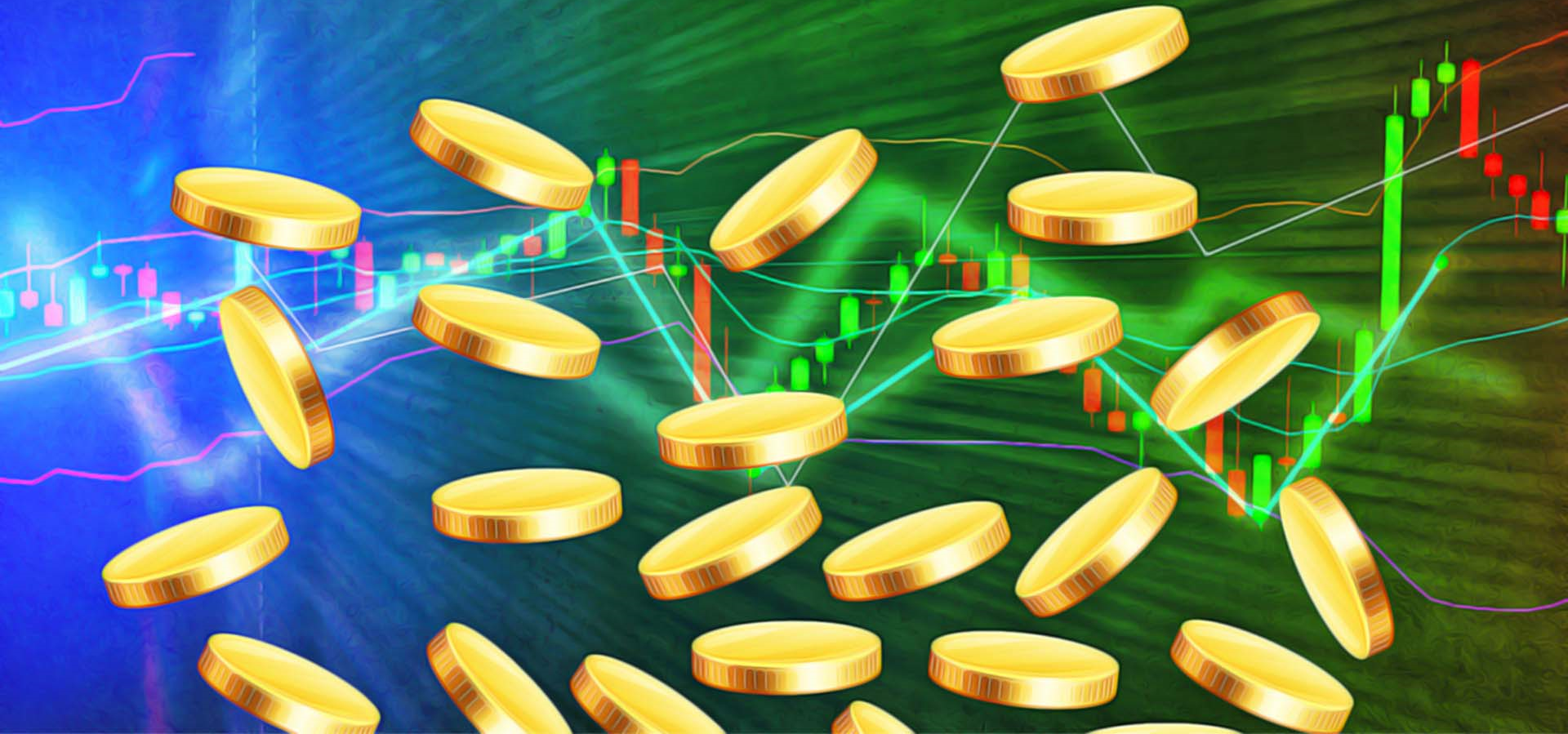Real World Assets in DeFi and Crypto are becoming exciting avenues to explore when investing in the digital currency market. Let’s look at what they are and how investors can benefit from them.
Many have observed that the decentralized finance (DeFi) and cryptocurrency landscapes have evolved. At one point, you would consider cryptocurrency to be a purely digital asset with no physical or at least tangible outline. However, a recent concept that has gained traction in the late 2010s and the early 2020s is the introduction of real-world assets in DeFi and crypto.
The concept is viewed as a bridge between traditional finance and blockchain technology, and many consider it the pathway to creating a newer, more robust financial ecosystem. So, let’s look at what RWAs are and how they are incorporated into DeFi and crypto.
What are Real World Assets (RWAs)?

RWAs are anything of value that has a physical or legal existence in the real world. They can constitute a real-state asset, gold, vehicles, etc., or financial instruments like stocks, bonds, patents, copyrights, etc.
In the context of DeFi and Crypto, RWAs refer to tangible assets outside the digital realm in the real world, like the instruments mentioned above.
However, crypto comes into place in the part where these assets are represented on a blockchain platform through tokenization, where ownership rights are fractionalized and stored as digital assets.
Fractionalized means that ownership of a real-world asset is divided into smaller pieces, each represented by a digital token.
The real-world asset is broken into smaller fractionalized units, creating multiple ownership shares.
Each unit receives a corresponding digital token stored on a blockchain platform. The token is proof of ownership and can transfer or manage that specific unit.
These tokens can be traded on DeFi platforms, allowing for fractional ownership and increased liquidity for previously illiquid assets like real estate or artwork.
The process of fractionalization opens up a vast array of opportunities for DeFi users by providing them access to previously inaccessible investment avenues.
There are various benefits to introducing RWAs in the crypto world, which we will discuss later. The main point to ascertain here is that the arrival of RWA can be considered a vital moment in the evolution of blockchain technology.
Types of Real World Assets Tokenized in DeFi
We will now look at some of the well-known financial instruments being tokenized in DeFi, offering interested parties various investment avenues to explore.
Traditional Financial Instruments:
- Securities: Tokenized stocks, bonds, and other financial instruments provide investors with an opportunity to gain access to established investment options, regardless of their financial health or their current location.
- Derivatives: Tokenized derivatives, like futures and options contracts, can be utilized for risk management and hedging strategies within the DeFi ecosystem. The strategy creates efficient risk-mitigation tools for both institutional and individual investors.
Physical Assets
- Real Estate: Tokenized real estate fractions make it possible for more people to invest in properties by breaking them into smaller parts. It helps make properties that were hard to buy and sell before easier to trade. It also lets a broader group of investors get involved, making it fairer and more open.
- Commodities: Tokenized commodities, such as precious metals, oil, and agricultural products, make trading smoother and prices easier to understand. It also helps to make supply chains work better and reduce risks for everyone involved in getting commodities from producers to consumers.
Alternative Assets
- Art and Collectibles: Tokenization unlocks fractional ownership of valuable art and collectibles, increasing liquidity and enabling broader participation in the art market. The process provides innovative investment opportunities and promotes greater accessibility to these traditionally exclusive assets.
- Intellectual Property: Tokenized intellectual property, such as patents, copyrights, and trademarks, facilitates easier licensing and monetization of intangible assets. It can prove useful in empowering creators and innovators to unlock new revenue streams and attract investment for their intellectual property.
As the technology and financial regulations evolve, we can expect further expansion into new asset classes and innovative tokenization models.
Advantages of Real World Assets in DeFi and Crypto

You can attain several benefits from integrating RWAs into digital currencies. We will look at some obvious benefits you can get from them.
1. Diversification and Risk Mitigation
RWAs, for the most part, introduce assets into the digital realm with a stable value, which is a very contrasting difference from the volatile nature of cryptocurrencies.
This means that it enables users to diversify their financial portfolios without worrying about the risk of losing financial capital due to a high influx in market fluctuations.
Therefore, these characteristics of RWAs make them very suitable investment options for those investors who don’t have the appetite for high-risk tolerance when facing high market fluctuations.
2. Enhanced Liquidity and Market Efficiency
Real-world assets like real estate or artworks are usually considered illiquid due to the time required to convert them into cash.
When these assets are tokenized and fractionalized, they become more accessible to most investors, which means their liquidity is increased, and they can be bought or sold quickly.
Another benefit you gain from this process is the increased market efficiency, as the quick rate of selling these assets makes them less vulnerable to losing their value, especially when they remain on the market for longer.
3. New Financial Products and Services
More types of real-world assets entering the DeFi space bring new opportunities for creative financial products and services.
Tokenized assets, like digital representations of real estate or art, can be used as security for loans and included in agreements for financial products called derivatives.
Investors can use tokenized assets as collateral to participate in decentralized finance protocols that offer yield-generation opportunities. These protocols often involve lending or staking your assets to earn interest or rewards.
These developments make the financial system within DeFi stronger and more varied. Therefore, they attract bigger and more professional investors.
4. Real-World Value Integration and Credibility
RWAs can prove instrumental in bridging the gap between DeFi and the real world. In broader terms, they can prove beneficial for tying cryptocurrencies to actual economic activities and existing financial markets.
Such capabilities of RWAs that are tokenized and fractionalized make them a sought-after commodity because they build a level of trust and legitimacy in the service they offer.
It also makes it easier for traditional finance and the blockchain world to work together, paving the way for more big institutions and regulators to approve.
5. Increased Transparency and Security
Blockchain technology is well-known for its transparency, where designated validators authorize all the transactions made in the network. They are also hailed for being very secure since tampering with the transactions made on the network is extremely hard.
When applied to RWAs, they build trust and provide its users accountability for the decisions made within the DeFi space.
Tokenized assets can be tracked and verified on immutable ledgers, mitigating the risk of fraud and improving operational efficiency.
Challenges in Tokenizing Real-World Assets

While the prospects of RWAs in DeFi sound very promising, the journey toward full-fledged integration isn’t very straightforward, as many challenges must be addressed first.
1. Legal and Regulatory Uncertainty
Currently, the regulatory landscape surrounding tokenized RWAs remains largely unsettled.
Different jurisdictions have varying viewpoints on these assets’ legal status and compliance requirements, creating uncertainty for issuers and investors.
The lack of clarity can hinder market adoption and innovation as projects struggle to navigate complex and often conflicting regulations.
2. Valuation and Price Discovery
One of the main challenges associated with tokenizing RWAs is accurately establishing the value of these assets. The task can be very complex, especially if you factor in the unique nature of the assets or whether these have an illiquid nature, like real estate or artwork.
Traditional valuation methods might not do justice to the price of these assets as they may calculate a value that can be either too high or too low to the actual value of these assets.
We often see oracles used to link what’s happening on the digital system (on-chain data) with the actual value of assets in the real world (off-chain values).
However, this process can get complicated and prone to risks, like making it easier for someone to manipulate the information.
3. Custody and Asset Management
Ensuring the secure custody and reliable management of tokenized RWAs is crucial for maintaining investor confidence and market stability.
There is a higher demand for implementing robust custody solutions if investors want to avoid sustaining the loss or theft of their assets.
Additionally, efficient asset servicing and management systems are needed to handle tasks like income distribution, voting rights, and compliance with real-world legal requirements.
Secure custody solutions require significant technological, infrastructure, and personnel investments.
It also includes implementing advanced encryption, secure storage facilities, and constantly employing cybersecurity experts to monitor and upgrade security measures.
4. Market Volatility and Manipulation
While we have discussed earlier that RWAs can introduce stability into the world of DeFi, they are not completely immune to the effects of the underlying markets, which means there is still a risk associated with them experiencing market fluctuations.
The increased volatility can expose investors to a new threat level they may not foresee beforehand. Therefore, they must employ risk mitigation techniques to avoid massive losses.
Investors would need to make a contingency plan in which they not only conduct a thorough surveillance of the market and the regulatory framework but also create an exit strategy, which saves them from suffering excessive fluctuations created due to potential manipulation attempts.
5. Technological Interoperability
The many different blockchain platforms and rules for turning assets into tokens can make it hard for them to work together smoothly.
In other words, investors can face scenarios of interoperability issues that stop assets from moving easily between different DeFi protocols.
These scenarios can cause serious hindrances in accepting RWAs in DeFi and the crypto landscape.
These challenges highlight the complexity of integrating RWAs into DeFi. However, overcoming these hurdles through collaborative efforts between industry players, regulators, and technological advancements can prove instrumental in unlocking the full potential of these investment tools.
Regulations and Compliance for Real-World Assets in DeFi

Integrating real-world assets (RWAs) into DeFi encounters challenges within a complex and evolving regulatory landscape.
The situation right now is a mix of new systems coming up and different areas with unclear rules. Regulatory bodies are working hard to figure out how to categorize and supervise tokenized real-world assets (RWAs).
Key areas of focus include adherence to securities regulations for tokenized traditional financial instruments, robust implementation of Know-Your-Customer (KYC) and Anti-Money Laundering (AML) compliance procedures, and addressing the unclear tax implications in various jurisdictions.
Regulatory initiatives from bodies such as the United States Securities and Exchange Commission (SEC), the Financial Action Task Force (FATF), and the International Organization of Securities Commissions (IOSCO) contribute to the ongoing dialogue, aiming to establish a well-defined and balanced regulatory framework.
DeFi projects can adopt proactive compliance strategies without clear regulations, including engaging with regulators, implementing robust KYC/AML procedures, conducting legal due diligence, and utilizing technology solutions.
These strategies enable projects to navigate the regulatory landscape, foster innovation, and build trust, ultimately paving the way for broader adoption of RWAs in the DeFi space.
Conclusion
The integration of Real World Assets (RWAs) into the decentralized finance (DeFi) and cryptocurrency landscapes represents a pivotal moment in the evolution of blockchain technology.
Tokenizing traditional financial instruments, physical assets like real estate, and alternative assets like art opens up new investment avenues.
Challenges like legal uncertainties, valuation complexities, and regulatory concerns must be navigated despite the potential advantages.
As the technology and regulations progress, collaborative efforts to address these challenges can unlock the full potential of RWAs, fostering a more diversified, transparent, and secure financial ecosystem within DeFi and crypto.




